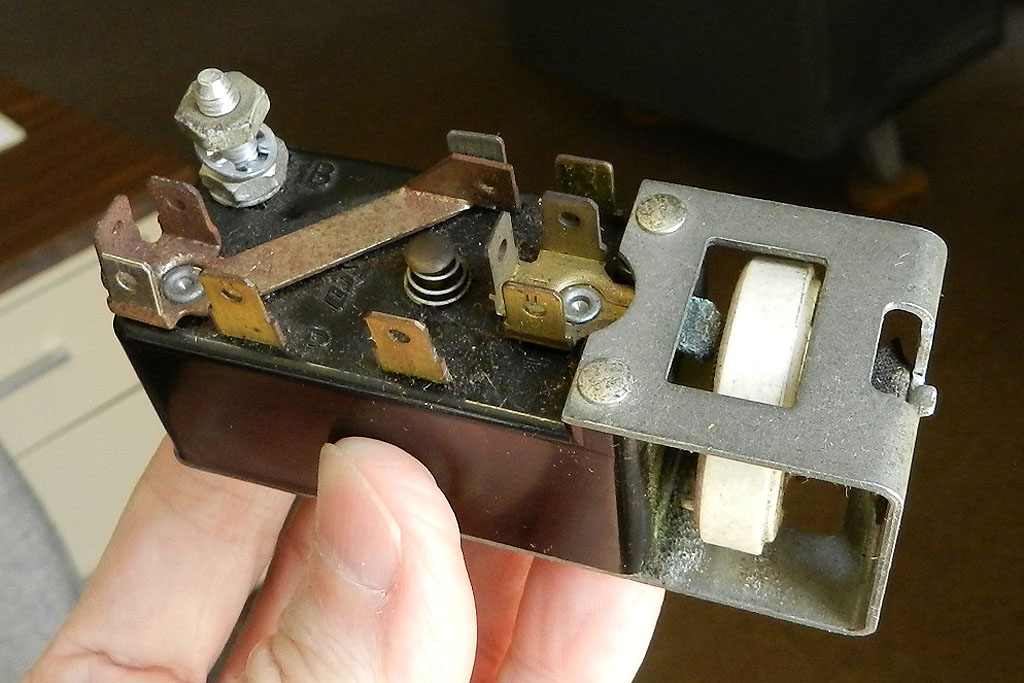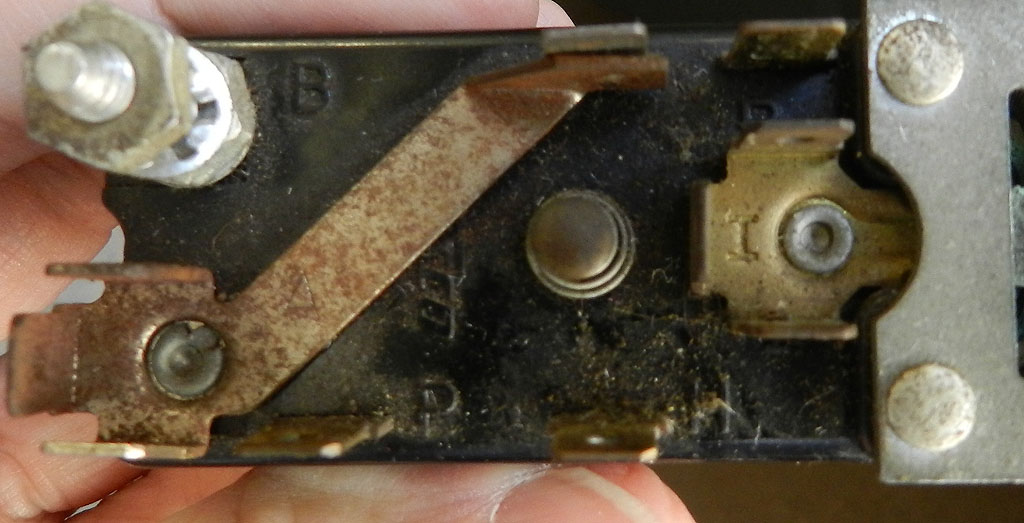 Golden Lion Grrrages
Golden Lion Grrrages F & G Headlight Switches More than you ever want to know There is a lot going on with our headlight switches. In 1962, Chrysler went to a modular connector on the headlight switch so you can't mess up the wiring connections. But if you look at a 60 or 61 switch, there are all these wires that could easily go on the wrong post. Things are not as bad as you think. Here is a picture of the 1960 wiring schematic for the headlight switch. The 61 is slightly different but first let's work on the 60. 
The "B" terminal is actually a nut and screw post. It connects to the battery and is the main power source for
the car. A second
wire runs from the post to feed power to the ignition switch.


You can see the posts are labeled. There are differences in switches, probably from manufacturer to manufacturer. For instance, this switch has an "R" terminal but no "T" terminal. A quick continuity test will confirm if on this switch "R" is the same as "T". Let's take a look at the 1961 wiring diagram. 
Our "B", "AUX", "P", and "H" posts are the same as 1960. "T" runs the tail lights as well as the light in the autopilot control. According to the diagram they now separate out the rheostatic feed to the electrolum power pack (wire E-2A) and have another rheostatic feed to the trans and heater push button lamps (wire E-2). I have never seen a switch like this, with a primary and secondary rheostat but I know you can use a 1960 style on a 1961 just fine. You can see the wiring isn't all that complicated. Once you take care of the "B", "AUX", "P", and "H" posts you have only the "T" and "I" to deal with. You know the "T" isn't in the circuit of the rheostat so a quick ohm test will tell you which terminal you want. Button up the "I" and you are home free. In case you'd like to hear more, the "AUX", head lights "H" and tail lights "T" are protected by internal thermal circuit breakers of about 20 amperes . In the event of a short they will keep trying to click back on. Beside the brake lights , the "AUX" terminal also feeds the dome lights in some cars. Working the dash dimmer back and forth rapidly 15-20 times will often clean off corrosion and restore operation. If the light bulbs in the push button arrays for the transmission and heater are working but the panelescent lights are not, most likely the switch is ok and the problem is in the EL lighting system. The capacitor inside the EL power supply is easy to fix, and if the original Bendix white capacitor is still there it is almost always bad. For the G there is a fuse near the El supply which is not on the wiring diagram. It is usually taped to the harness. If you have a blown fuse, expect a bad EL power supply. If your panelescent lights operate with the rheostat full on but fail as the rheostat is rotated to dim, the rheostat is burned out or corroded. The simple fix is to leave the rheostat full on -- you won't hurt anything.
You can find more information on F G H headlight switches here. |
